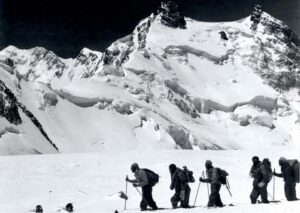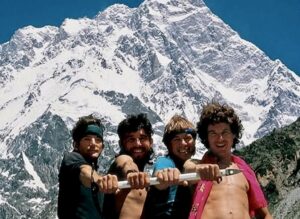Most long-distance hikers are familiar with the thru-hiking Triple Crown of the United States’ Appalachian Trail (AT), Continental Divide Trail (CDT), and Pacific Crest Trail (PCT). But while thru-hiking continues to gain traction in the U.S. and Canada, the countries’ North American neighbor has lagged behind.
Both the Continental Divide and Pacific Crest trails have a terminus at the Mexican border. Mexico itself, however, has no thru-hiking scene to speak of.
One woman is looking to change that.
Mexican thru-hiker Zelzin Aketzalli completed the Triple Crown in 2019 on the CDT. In April of that year, she started it at a unique place, with a unique idea in mind — to see if she could extend it into Mexico.

Route research: Continuing the CDT in Mexico?
Aketzalli’s CDT thru-hike started 136km south of the U.S. border, in the Mexican state of Chihuahua.
“I started there because I wanted to see if it was possible to continue the route along the Continental Divide through Mexico and then connect to the Continental Divide Trail in the United States,” she told christiancentury.org. “I got a taste of what a Mexican portion of the CDT would be like.”

Quickly, though, she realized that northern Chihuahua was too dangerous for thru-hikers, so she shifted her focus to Baja California.
The long, narrow peninsula is already home to the world-famous Baja 1000 off-road race. Aketzalli saw hiking potential in it, though, based on an ancient missionary route.
The Camino Real: Aketzalli seeks to build a path along this ancient conduit
Catholic Jesuits oversaw the construction of the Camino Real from 1697-1768. The trail connects Loreto at the southern end of the peninsula with El Descanso in the north. Road construction and erosion have significantly blurred the original route, but much of it is still visible.
Aketzalli said research for a thru-hike based on the Camino Real is “almost finished”, but that significant obstacles still lie ahead. Routefinding challenges like avoiding roads while stringing water sources together stand in the way, as do bureaucratic roadblocks.
The project would be the first of its kind in Mexico, where Aketzalli says that thru-hiking is all but nonexistent.
“No one even knows what it is; it doesn’t really exist in Mexico as a sport or as a concept. That’s why education and promotion are my first challenges and objectives in Mexico,” she said. “I think the biggest obstacle will be introducing the people of Mexico to this type of sport. Another is getting support from the government for these kinds of trails.”

She also hopes the possible 1,100km route will focus attention toward the environment and empower Indigenous communities by economic proxy. For her, thru-hiking is a spiritual undertaking. She hopes that her work can help other Mexicans feel the same way.
“I have had many spiritual experiences on my hikes. For the Nahua people of Mexico, Mother Earth is called Tonantzin. She takes care of you because you take care of her,” Aketzalli explained. “Walking the Camino Real offers us a chance to explore and better understand our relationship to our land and history.”
You can follow Zelzin Aketzalli on Instagram.






